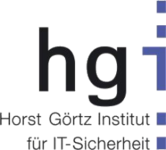Consortium
This project is built up of 6 participants (4 of universities and 2 corporations).
For the last years, the joining participans have established a lot of competences in different districts in their area of research.
The iAID-Consortium consists of:

Institute for Internet Security, Westfälische Hochschule, Gelsenkirchen
The Institute for Internet Security leads the project-management. Additionally, the institute participates the review, the development of reaction-possibilities and the evaluation.

CASED, Hochschule Darmstadt
The Darmstadt University focuses in this project on design and development of robust methods for information classification of anomaly detection. In addition, appropriate reactive measures are developed and evaluated.

Fachhochschule Frankfurt
The University of Applied Sciences Frankfurt am Main is located on the distribution aspects of sensors and information fusion. The second key aspect is the data-protection analysis and design of the respective components and systems.

Horst Görtz Institut, Ruhr-Universität Bochum
The Institute will develop Classification methods for efficiently detect anomalies. The focus is on intelligent filtering techniques to limit the flood of information, and on privacy enhancing the detection of infected systems, particularly botnets.

Vodafone D2 GmbH
Vodafone GmbH focuses on the sensor technology. It also test the algorithms and the process which were developed by the scientific partners. Furthermore Vodafone takes part in the evaluation process of the overall project results. Additionally it contributes to the work package "Countermeasures". Project related processes will be defined and evaluated as well.

Dr. Bülow & Masiak GmbH
Dr. Bülow & Masiak GmbH supports its scientific partners in the implementation and testing of the systems and algorithms. Early prototypes and test systems are deployed and further improved on the basis of the information obtained. The resulting findings are integrated into responses and strategies and lead to the final prototype, which will be evaluated in long-term tests.


